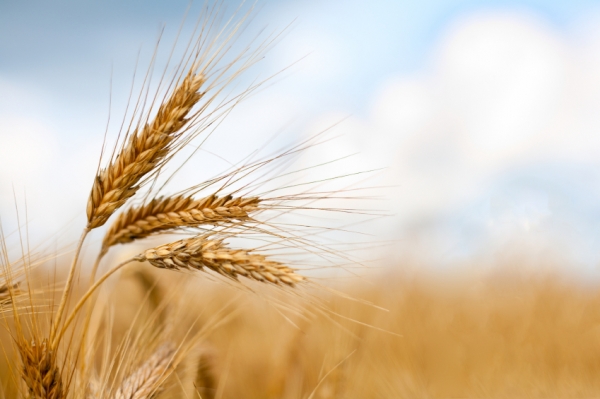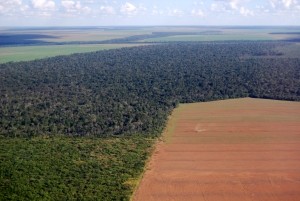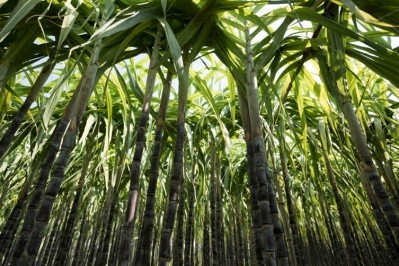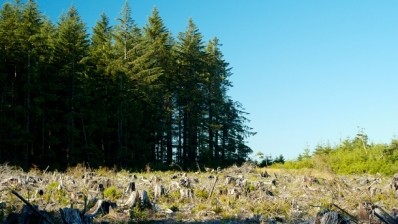The climate crisis is already hitting food production: An urgent system-wide response is needed
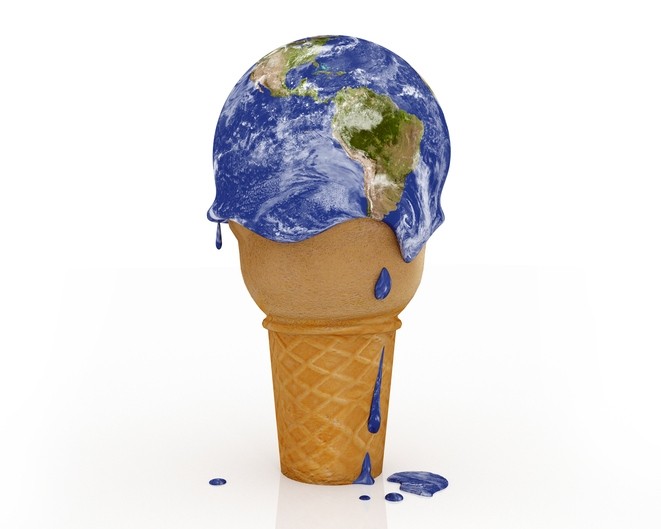
Climate change presents various threats to human and planetary health. Not least among these are the risks to food and nutrition security.
This issue was flagged by a recent far-reaching report from the European Academies’ Science Advisory Council (EASAC).
According to the report, which surveyed a “large body” of independent studies on the health implications of climate change, global warming is already having an adverse impact on human health and risks are only projected to increase.
Current trends in greenhouse gas emissions point to a global average temperature rise of more than 3°C above pre-industrial levels by the end of the century, well above the maximum 2°C target enshrined in the Paris Climate Change Agreement. The temperature rise will be higher over land than oceans, exposing people to “unprecedented” rates of climate change and contributing to the burden of disease and premature death, EASAC noted.
Working group co-chair, Professor Sir Andy Haines of the London School of Hygiene & Tropical Medicine, said he hoped the report would act as a “wake-up call” to draw attention to the need for action to decarbonise the economy.
“The protection of health must have a higher profile in policies aimed at mitigating or adapting to the effects of climate change,” he stressed. “If urgent action is not taken to reduce emissions in order to keep temperatures below the 2°C (or less) limit ... we face potentially irreversible changes that will have wide ranging impacts on many aspects of health.”
Food supply under threat
Climate change is an undeniable risk to food security because it will impact the agricultural production systems on which we reply.
Higher temperatures have long been projected to have a negative impact on crop yields. But a new study led by the University of Minnesota in collaboration with the University of Oxford and the University of Copenhagen presents fresh evidence that this is already happening.
Researchers looked at yields of barley, cassava, maize, oil palm, rapeseed, rice, sorghum, soybean, sugarcane and wheat, which account for 83% of the calories produced on arable land. They found that changes in climactic conditions are already impacting harvests.
Based on reported weather and crop data, they found climate change causes a significant yield variation, ranging from a decrease of 13.4% for palm oil to an increase of 3.5% for soybeans. An average reduction in yield of around 1% was detected.
Impacts varied by both crop type and geography. The implications of climate change on global food production are mostly negative in Europe, Southern Africa, and Australia, generally positive in Latin America, and mixed in Asia and Northern and Central America, the researchers noted. Half of all food-insecure countries are experiencing decreases in crop production -- and so are some affluent industrialised countries in Western Europe.
"There are winners and losers, and some countries that are already food insecure fare worse," said lead author Deepak Ray of the University of Minnesota's Institute on the Environment. "The research documents how change is already happening, not just in some future time.”
The EASAC researchers stressed that the economic clout of the European region would likely mean lower domestic production sparked by climate change would probably be offset by higher food imports. “But this will have increasing consequences for the rest of the world; for example, by importing fodder for livestock from arable land that has been created through deforestation.
“It is therefore vital to develop climate-smart food systems to ensure more resilient agricultural production and to promote food and nutrition security, for the benefit of human health.”
What can be done?
Better understanding of agriculture and the food system's unique place in climate change - as both drivers of climate change and victims of it - is helping to increase support for climate action.
Nevertheless, progress across the food system is “lagging”, according to new analysis from CGIAR Research Program on Climate Change, Agriculture and Food Security (CCAFS) led by the International Center for Tropical Agriculture (CIAT).
Ana María Loboguerrero, the head of global policy research at CCAFS, argues that climate change mitigation efforts need to stretch well beyond agricultural production systems to encompass the entire food chain.
"If you think about the two-degree increase, efforts need to go beyond the agricultural sector," said Loboguerrero. "This means reducing emissions by stopping deforestation, decreasing food loss and waste, reducing supply chain emissions, and rethinking human diets, if we really want to get on track to that target."
Agricultural production accounts for about 10-12% of all emissions. Significantly, food waste alone accounts for almost as many GHG emissions as agriculture. With one-third of all food produced thrown away, food waste contributes 8% of global emissions. If just 25% of this waste was saved, it would feed an additional 870 million people, Loboguerrero stressed.
Various barriers, ranging from economic to social factors, mean that the uptake of emission-reducing practices in agriculture is slow. Even under the most optimistic uptake scenarios, studies have shown that by 2030 these practices will only contribute 21-40% of a one-gigaton reduction in carbon dioxide emissions, which would be about 1% of current annual CO2 emissions, the researchers stressed.
For this reason alone, Loboguerrero suggested, tackling the relatively low hanging fruit of food waste offers an important quick win. "Food loss and waste is a big opportunity," Loboguerrero said. "Addressing this issue can reduce emissions intensity, potentially improve global nutrition and boost the bottom line for smallholders, who are hardest hit by losses on the farm."
Deforestation in tropical regions – largely driven by the growing demand for agricultural commodities, such as palm oil, soy and cocoa – must be addressed, NGOs such as Global Canopy stress.
“Our global demand for commodities such as palm oil, soy, beef and paper packaging is driving forest loss, exacerbating climate change and putting biodiversity at risk,” Sarah Rogerson, a researcher in Global Canopy’s supply chain programme, warned.
In its recent ‘Forest 500’ report, Global Canopy compiled a list of the best – and worst – performers taking action on deforestation in their supply chains. The top five manufacturers included Nestlé, Unilever and Mars alongside personal care and consumer products companies Kao Corp and L’Oreal. From retail, Marks and Spencer, IKEA, News Corp McDonald’s and Pearson ranked best.
Major global corporations in the food sector have pledged to end deforestation in their supply chains by 2020 under the New York Declaration. But, while the issue of deforestation is commanding increasing attention, Global Canopy was critical that “strong commitments” are failing to be translated to action on the ground.
Robertson said food manufacturers need to raise their game: “The most powerful companies in forest-risk supply chains do not appear to be implementing the commitments they have set to meet global deforestation targets. With the 2020 deadline looming, it is critical that companies raise their ambition and address the stark gap between the promises they have made and activities on the ground."
One of the most significant actions that can be taken to decarbonise the food system, EASAC argues, is the promotion of “healthier, more sustainable diets”. This includes increased fruit, vegetable and legume consumption and reduced red meat intake. This shift would “lower the burden of non-communicable diseases and reduce greenhouse gas emissions”, the European scientists argue.
“Promoting dietary change could have major health and environmental benefits, resulting in significant reductions of up to about 40% in greenhouse gas emissions from food systems as well as reducing water and land use demands. Such diets can also lead to major reductions on non-communicable disease burden through reduced risk of heart disease, stroke and other conditions,” EASAC suggested.
CCAFS researchers agree that growing global demand for animal production is a key challenge to climate mitigation efforts.
By 2000, the sector contributed an estimated 18% of all human-caused greenhouse gas emissions, when accounting for related deforestation and land-use change as well as direct emissions. Given current trends in population growth and meat consumption, the sector could account for about a quarter of all emissions by 2050, CCAFS warned.
"Reducing meat and dairy emissions needs to be a priority," said Lini Wollenberg, flagship leader of CCAFS' low-emissions development research. "And the good news is that we have lots of options in the pipeline, ranging from low-emissions cattle to meat alternatives. We need more research and development to make some of these options a reality."
Loboguerrero stressed that mitigation efforts will require political will in an environment that is more open to adaption.
Adaptation - learning to cope with the problem - is a far easier sell than mitigation - reducing emissions - which is often seen as constraining farming options and increasing costs. Developing countries frequently complain that mitigation measures will limit economic growth.
"There is a lot of tension and you can see it when you go into the negotiations. Some countries don't even want to begin discussions on the mitigation side of things," Loboguerrero said. "Adaptation is something that everyone, however, agrees is necessary. Everyone is keen on discussing adaptation. Some adaptation measures have the co-benefit for mitigation. It's like an entrance to discussing some things at some points that are a little bit taboo in the negotiations."
Sources
Climate change has likely already affected global food production'
PLOS ONE
Published online ahead of print: 31 May 2019
DOI: https://doi.org/10.1371/journal.pone.0217148
Authors: Deepak K. Ray , Paul C. West, Michael Clark, James S. Gerber, Alexander V. Prishchepov, Snigdhansu Chatterjee
'Food and Earth Systems: Priorities for Climate Change Adaptation and Mitigation for Agriculture and Food Systems'
Sustainability
Published online ahead of print: 5 March
DOI: https://doi.org/10.3390/su11051372
Authors: Ana Maria Loboguerrero, Bruce M. Campbell, Peter J. M. Cooper, James W. Hansen, Todd Rosenstock and Eva Wollenberg
